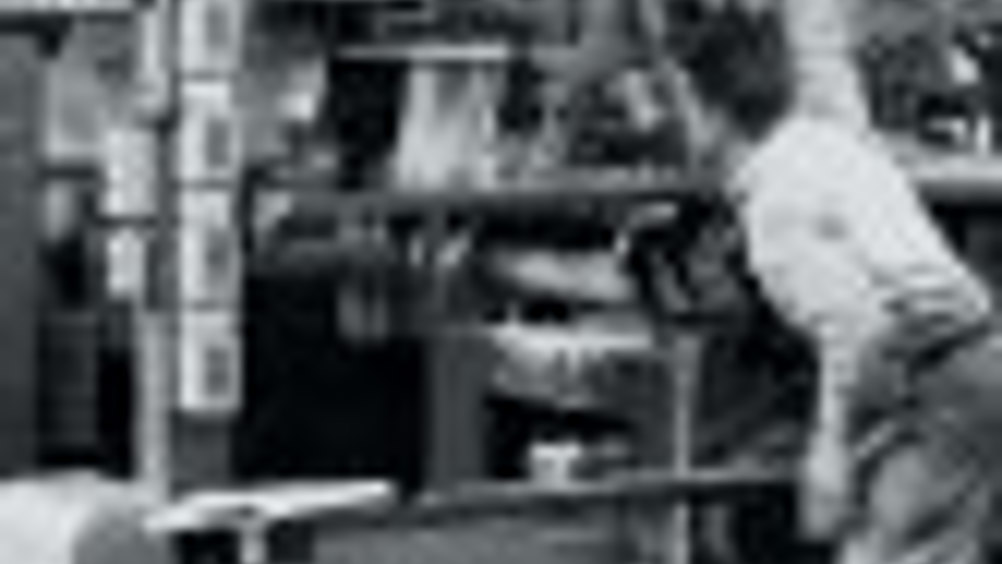There are signs that the printed medium is quietly finding ways to reinvent itself and that online is not as perfect as people once thought.
That said, a quick glance at ABCs makes for a depressing read. The Guardian, for example, for the year ending May 2010, suffered a fall in sales of the printed edition of 10.5% to just over 300,000. By contrast, for March 2010, guardian.co.uk was visited by 33.4m unique users, a 27.2% increase on the previous March. Its paid-for iPhone app, meanwhile, was downloaded by 121,000 people in the three weeks following its launch. On that evidence, you’d be forgiven for thinking news in print are one step away from fossilisation.
However, as Richard Addis, former editor of the Daily Express and executive editor of the Daily Mail explains, converting 33.4m users into profitable business is no easy task. "Papers make more money from printed editions than online editions – much more," he says. "Advertising doesn’t really pay online, there is too much choice and too little evidence that it works."
A heavy burden
Ian McDonald, former managing director of operations at News International, agrees. "If there were no print newspapers, there would be a huge extra burden on producing electronic newspapers. At present, the print edition bears the brunt of the costs for production, analysis, HR – the general overheads. Without the printed newspaper, those costs get transferred to online and it is questionable whether it could support those costs."
However, it’s also debatable whether print will be able to bear the financial strain much longer, which goes some way to explaining the adoption of pay-walls by the likes of News International. You already have to pay for online access to The Times and The Sunday Times and this month The News of the World goes paid-for. The potential success of the pay-wall in monetising the online model is a matter of heated debate, as is the logic of introducing it (Guardian editor Alan Rusbridger has called it an "odd and dangerous" move). If it works, it could be the final blow for the print editions, but some still believe print could survive the challenge.
One such advocate is John Ridding, chief executive of the Financial Times (FT). The FT has required a subscription for online content since 2002, but the print version of the newspaper is alive and well, and indeed in some areas it is expanding – it launched a new print edition in the Middle East in 2008, printed at its Dubai plant, and is investing in its weekend paper for all international editions.
"There has been a lot of anxiety and doom and gloom around because of digital and what it means to print," says Ridding. "However, we don’t subscribe to that. We feel there is a very robust and healthy future for print that will run alongside the rise of digital distribution and digital devices."
He argues that print will always have a place as it can provide something no other format can: the ability to surprise.
"For our audience, to be a successful senior business person you also need a broad spectrum of news," he explains. "Print has the ability to surprise readers, to bring them information that they were not looking for, but that is still relevant to them – a piece on Sweden next to the article on China they had picked the newspaper up for – and that broadens their perspective. It is a very unique format."
Digital opportunities
But ‘surprising’ a reader won’t be enough to ensure the medium’s survival. Online editions are finding new ways to facilitate this function, with links in stories to other articles a reader may like. It has yet to recreate the experience Ridding describes, but it is a fair bet that it will do soon. A more concrete punt for print’s future in newspapers is digital print.
McDonald, the man in charge of News International’s mammoth print upgrade, believes that digital print technology has the capacity to transform the way newspapers are printed and distributed.
"These little digital machines are doing remarkably well," he says. "It is now much easier to produce a niche title for 800-1,000 people without the overheads and in a viable way. As a result, you might find that newspapers will evolve to produce titles to meet specific areas and/or groups once the digital technology reaches a point to make that possible. I think we have definitely seen the last of the big press investments. In the new market, that sort of capacity and way of doing things makes no sense."
But is there a demand for this type of short-run newspaper catering to a small audience? The success of two fledgling companies suggests there might be.
The first is a publication called HU17 based in Beverley, Yorkshire, which publishes pictures and editorial based entirely on the goings on in the postcode from which it takes its name. "I was taking photos in the local community and putting them on a website," explains HU17 founder Paul Smith. "It proved amazingly popular with around 30,000 hits per month, so I decided to put some of these photos into a newspaper."
His first effort was "nothing short of a leaflet", but the response was good enough to warrant a second edition. Since then, it has grown into a publication the local residents call "the Hello! magazine of Beverley", with enough advertising and sales for one-man band Smith to turn a profit and to consider upping the print run from the current 100 copies.
"If I could get the help, not just financially but in terms of expertise to take the product to the next level, I could easily circulate 1,000-2,000 copies a week," says Smith. "People buy the print edition despite the content being available online because they are excited to see themselves in print. Also, there is more of a community feel to the paper, as people will buy it and look through it together, have a little gossip, it’s a social thing."
Personalised newspapers
It is the personal touch that another enterprising firm has recognised as an outlet for the newspaper format. The Newspaper Club offers bespoke newspapers to consumers through its website. You create your newspaper using the company’s layout tool, ARTHR, or you can upload PDFs you have created yourself. In seven days, a newspaper of your creation is sat on your doorstep.
"People just haven’t been able to make their own newspapers before, not easily anyway," explains Newspaper Club’s Anne Ward of the company’s success. "The papers that come in each week are very varied, from large corporate clients, to smaller organisations and individuals and the feedback is that people love to get a physical product and that there is a real affection for newsprint."
It would appear, then, that the demand is there for printed niche products but, so far, the major publishers have seemed reluctant to get involved. Not for much longer, according to the FT’s Ridding.
"I think that just as readers are happy and comfortable with several different platform devices, they are also happy with several different levels of engagement – so a more general view then moving to a more specific view. This is something we have been exploring ourselves by producing a range of very specialised publications, be it investment in China or the fund management sector. We are very keen to develop niche subject areas and niche publications as we see very strong engagement from our readers in this way."
The problem for print is how long this engagement will be directed through a print medium. It is easier and cheaper to deliver tailored bespoke content online and the growth of tablet computers such as the iPad and e-readers such as the Kindle has been driven by the rapidly improving quality of digital screens. This has persuaded a whole new section of the newspaper buying public to migrate online. The FT, for example, saw 250,000 downloads of its iPad app in the first month [400,000 since launch] and that constitutes 10% of its digital subscriptions.
"The market is telling us that readers engage through that device so we need to make sure our edition on the iPad is as good as possible," admits Ridding. "However, it is very encouraging that these tablets do, in a sense, have a newspaper feel to them – they are very tactile, you are touching the screen, you can almost build the emotional relationship you make with a newspaper that is printed."
The key word for print there is "almost". While that word remains in assessments of digital technology’s efforts to recreate the printed product, those printed products will remain. But digital technology moves quickly and printed newspapers have to match them. Fortunately, HU17, The Newspaper Club and digital print technologies are all giving a good indication of how printed newspapers could evolve. The ability to build on this will determine whether in 30 years time the printed medium for newspapers has managed to navigate around the evolutionary dead end and compete meaningfully for the consumer’s attention.
Click on the links to read the full interviews with the FT’s John Ridding and News International’s Ian McDonald
Natural selection

The common preconception about the printed newspaper is that it's on the verge of extinction - as the evolution of digital media rolls on, the humble newspaper is going the way of the dinosaurs. But while it is true that printed newspaper volumes are down and that online newspapers are increasingly popular, this is not the whole story.









